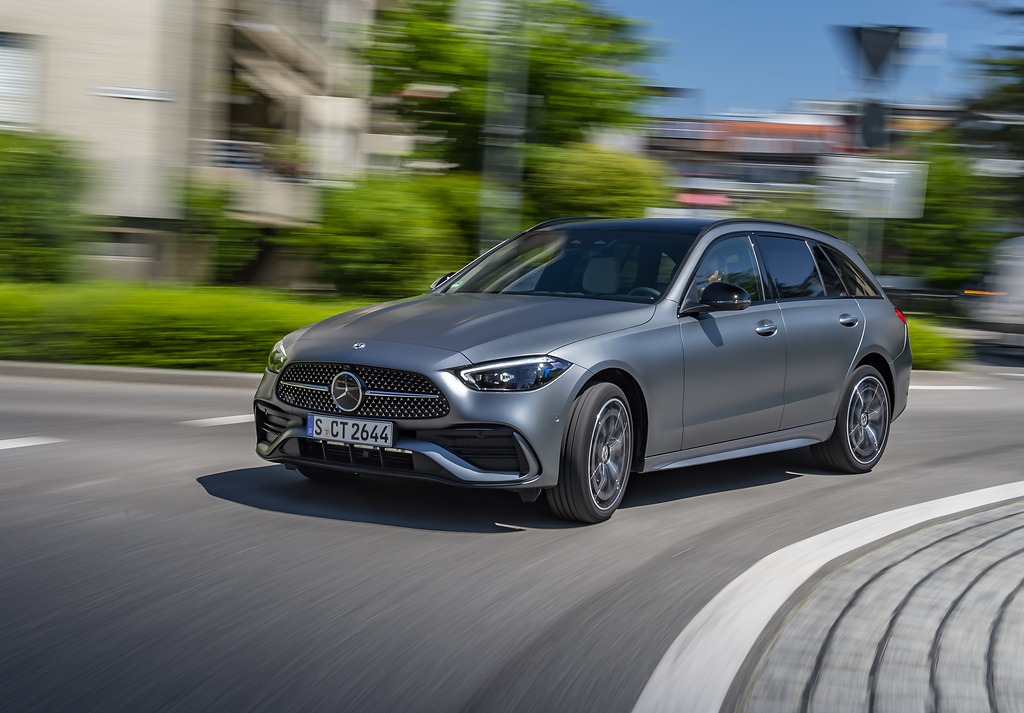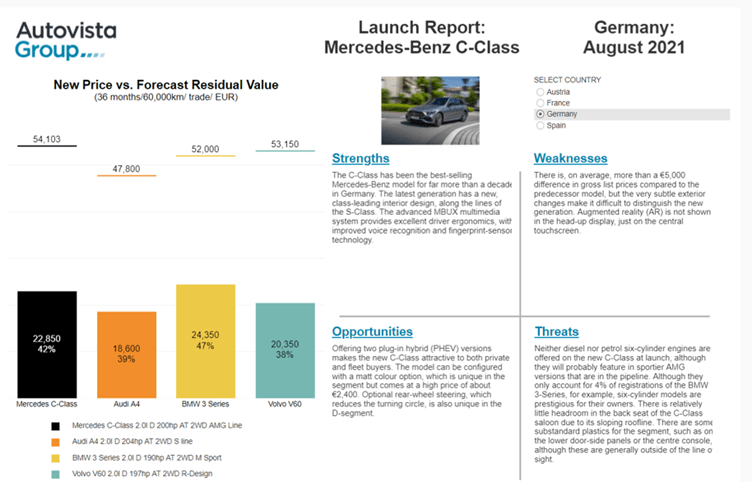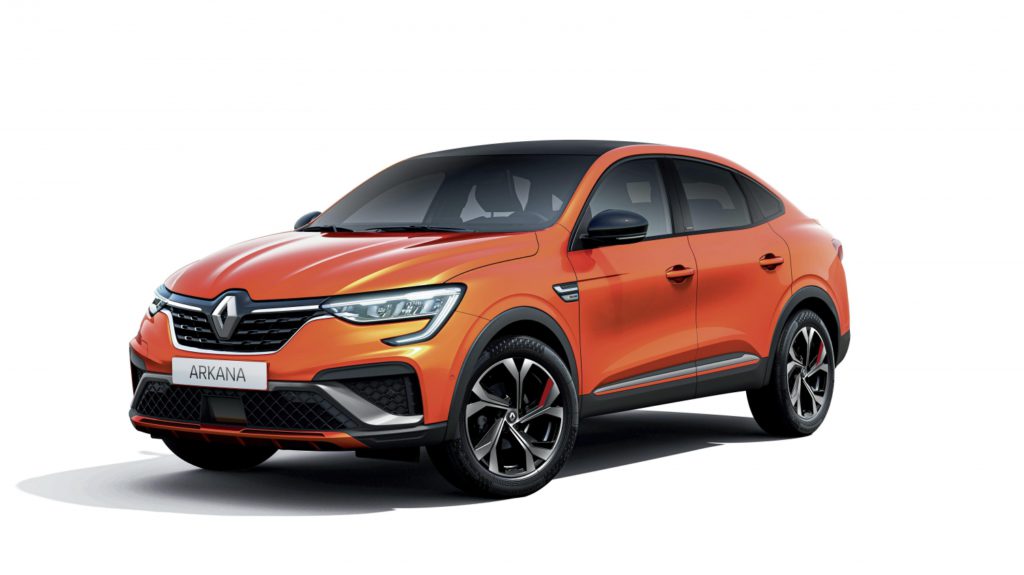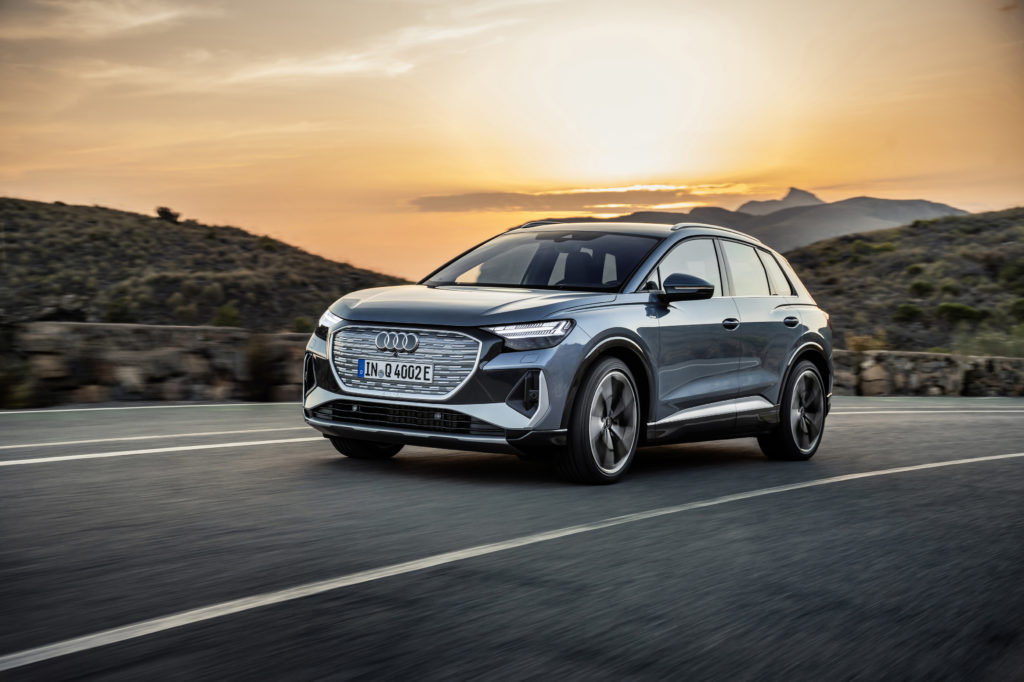Launch Report: Mercedes-Benz refines the C-Class with 48-volt mild-hybrid technology
20 August 2021

The new generation of the Mercedes-Benz C-Class (W206) has a refined exterior design, with simple and clear lines, like the new S-Class. While the model has grown in length and width by a few centimetres, especially benefitting rear passengers, the interior may not be perceived as spacious because of the inclination of the windscreen. Furthermore, there is limited headroom in the back seat of the saloon version due to its sloping roofline.
The vehicle’s interior is more digital and intelligent than in the previous C-Class and it is full of the most up-to-date features, placing it ahead of rivals. The dashboard is impressive, incorporating a 12.3-inch instrument cluster and an 11.9-inch central touchscreen, which is placed vertically and slightly oriented to the driver. The second-generation MBUX multimedia system is best in class, providing excellent driver ergonomics, with improved voice recognition and fingerprint-sensor technology.
The C-Class has been the best-selling Mercedes-Benz model for more than a decade in markets such as France and Germany. It is available at launch with both diesel and petrol engines, which are all equipped with 48-volt mild-hybrid technology, making the model attractive to both private and fleet buyers.
No six-cylinder engines are offered initially, but they will invariably appear with the sportier AMG versions that are in the pipeline. The market launch of the C300e plug-in hybrid (PHEV), with a purely electric range of approximately 100km, is planned for later in the year and four-wheel-drive variants will be launched too. In addition to the sedan and estate body styles, an ‘all-terrain’ version will also join the line-up.

The list and options prices of the new C-Class are comparatively high. In Germany for example, there is, on average, more than a €5,000 difference in gross list prices compared to the predecessor model, but the very subtle exterior changes make it difficult to distinguish the new generation.
The popularity of traditional D-segment cars has waned in recent years as they face stiff competition from SUVs on the one hand and coupé/hatchback models on the other. Furthermore, the increased supply of battery-electric vehicles (BEVs) is making them more visible. The Tesla Model 3, for example, is becoming a strong rival for premium D-segment saloon cars. Even Mercedes’ own communication is more focused on other body types with BEV technology, which may divert attention away from the C-Class.
With government subsidies and tax benefits, the mild-hybrid petrol C-Class models are expected to gain ground at the expense of the diesel engines in many markets. This could, however, lead to possible oversupply on the future used-car market and put more pressure on residual values.
View the Autovista Group dashboard, which benchmarks the Mercedes-Benz C-Class in Austria, France, Germany, and Spain, for more details. The interactive launch report presents new prices, forecast RVs and SWOT (strengths, weaknesses, opportunities, and threats) analysis.



